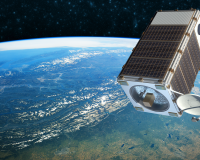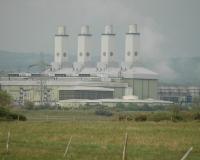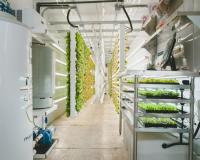
Vibrant Environment
All | Biodiversity | Climate Change and Sustainability | Environmental Justice | Governance and Rule of Law | Land Use and Natural Resources | Oceans and Coasts | Pollution Control

This conversation with Danny Le, BPSOS, is part of the ELI Gulf of Mexico team’s “Why I Participate in Gulf Restoration” blog series. The series aims to highlight the views of community members impacted by the BP oil spill, and provide a glimpse of some challenges and successes they face in getting involved in the restoration processes.

Recycling is perhaps the most prevalent pro-environmental activity at the household level. Household recycling efforts may be influenced by supportive nudges and, in some cases, laws that mandate recycling behavior. But unlike efforts such as decreasing household energy usage, success in recycling also hinges on governmental support: there must be some mechanism for collecting the recycled materials and converting them into useable commodities. Government entities, and in some cases private waste collection firms, provide for these recycling amenities.

On Monday, April 16, ELI, the Environmental Justice Committee of the American Bar Association’s Section of Civil Rights and Social Justice (CRSJ), Georgetown University Law Center, Georgetown Environmental Law Society, and the D.C. Bar Association hosted a seminar entitled: Environmental Justice in the 21st Century Part 2: Threats and Opportunities. The event focused on changes and challenges in the environmental justice movement and featured a panel of environmental justice experts and a keynote speech from Rep. Raul Ruiz (D-Cal.). Representative Ruiz, a medical doctor from Coachella Valley, California, delivered a passionate speech describing the struggles facing communities of color in his district who are often disenfranchised from the environmental decisionmaking process. His bill, the Environmental Justice Act of 2017 (H.R. 4114), the companion to Sen. Cory Booker’s (D-N.J.) bill introduced in the Senate (S. 1996), aims to empower communities to have meaningful input into environmental decisions.

On April 11, Environmental Defense Fund (EDF) President Fred Krupp announced the organization’s plans to create and launch a new satellite to monitor and measure global methane emissions—from space. The "groundbreaking" MethaneSAT plans were unveiled in a TED talk in Vancouver, B.C. The satellite will measure only emissions of methane, the powerful greenhouse gas responsible for roughly one quarter of the man-made global warming we currently experience.

Most states have significant room to improve their legal frameworks regarding water conservation and efficiency, and long-term resiliency, according to a report released last month by ELI and the Alliance for Water Efficiency (AWE). In the 2017 Water Efficiency and Conservation State Scorecard, a five-year update to the 2012 scorecard, each state received two separate grades: one for water use efficiency and conservation, and one for climate resiliency planning. The national average for both is a “C,” but with some great grades in each area and more than half of the states earning higher water use efficiency and conservation scores than they did in 2012.

In 2016, the United Kingdom (U.K.) had an “unprecedented drop” in its carbon emissions, reducing emissions from production of electricity by 25%. The U.K. achieved this reduction by switching from coal to natural gas for electricity generation—leading to a carbon reduction equivalent to removing over 30% of Britain’s cars from the road. A recent report published in Nature Energy by researchers at two U.K. institutions, the University of Sheffield and Imperial College London, considers the “enabling conditions in Great Britain and the potential for rapid fuel switching in other coal-reliant countries.”

The U.S. Department of the Interior (DOI), led by Secretary Ryan Zinke, manages one-fifth of the land in the United States. Its National Park Service (NPS) oversees units covering more than 84 million acres. The U.S. Fish and Wildlife Service manages refuges totaling just over 81 million acres. And the Bureau of Land Management (BLM) manages 247.3 million acres across 20 states. In total, these three agencies oversee 65% of the land owned by the federal government in the United States.

It’s well known that up to 40% of food in the United States goes to waste. As a result, a large portion of the blue water utilized in agricultural irrigation ends up back in the ground—not in aquifers, but in landfills. While the majority of food waste in the United States is attributable to the disposal of safe, edible foods, a considerable amount of food that goes to landfill is “lost” due to spoilage or food being otherwise deemed unfit for human use.

Our cities are booming in both population and area. This uncontrolled land expansion, known as urban sprawl, results from several factors including transportation technology, income, consumer preference, and housing pressures. Unfortunately, urban sprawl can negatively impact the most vulnerable communities. The same factors that bring about sprawl also combine to produce “food deserts,” the lack of fresh quality food in an urban setting. For example, a 2014 John Hopkins University study showed that access to both healthy food and the number of supermarkets decreased in poor and minority communities when compared to their counterparts. Moreover, a 2016 Landscape and Urban Planning journal article shows that as low-wage jobs are generated in the areas of new urban growth, low-income communities in urban centers face increased difficulty finding entry-level jobs.
Urban agriculture has had moderate success addressing these challenges. In particular, one emerging method known as “aeroponics” may provide a more sustainable solution to expand access to local produce in the urban core while simultaneously providing stable employment opportunities for community members.

“April showers bring May flowers,” the saying goes – but we also rely heavily on groundwater. In honor of the changing seasons, Vibrant Environment recounts a tale from The Environmental Forum of neighborhood water woes.
* * *